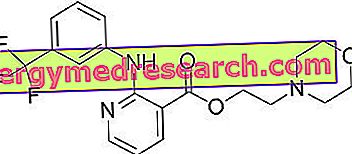Organized by Doppio Marcello
In the second half of the nineties in the fitness clubs we have witnessed the birth of new sports activities, including indoor cycling (or spinning).
Often we talk, for good reason, of the physical and psychological benefits that sports activities and sports in general bring to our body.

It is a complete activity from the cardiac point of view. The alternation of moments of intense effort with lighter ones, allows you to vary your heart rate, obtaining an excellent workout. The indoor cycling makes the muscles of the thighs work evenly; strengthening and firming them, strengthening the arm muscles, it also offers anaerobic and strengthening characteristics in a much shorter time than the racing bicycle or mountain bike.
However, indoor cycling can also be a high commitment activity, mainly anaerobic, characterized by work phases with abruptly varying intensity, with violent stresses both on the cardiovascular system (very high peak heart rates can be reached) and on muscular (there are high levels of lactacidemia); attention therefore, because if indoor cycling is not practiced in a "timely" manner, one might be faced with the birth of real muscular and articular pathologies.
The monitoring action, supported by the studies carried out in the United States, has highlighted pathological problems of various kinds (mainly on the knees) in people who have been practicing indoor cycling for a long time. These studies have confirmed that prolonged periods of activity with the bikes, using adjustments that are not always suitable for their morphology and with excessive speed executions, can cause serious damage to the knees; in particular they seem "under accusation" the accelerations (realized without adequate resistance), the "Running" and the numerous quantities of "Jump" proposals (very often without knowing if those in front of them are able to support them).
All this could cause several and repeated microtraumas against the femoral-tibial joint and above all the patellar tendon, more "thin" than the overlying quadriceps tendon and therefore less suitable for supporting too many intense and repeated stresses. Furthermore, trauma to the patellar tendon would be attributed, in the "standing" techniques, to the imbalance of the body weight forward, caused by the loss of balance on the support base, a consequence of poor posture or excessive speed. Unlike cycling, and always due to the repetition of the "standing on the pedals" position, indoor cycling could also cause an overload on the spine; the professionalism of the instructor, who must know what risks his customers could run (if not properly "trained") and avoid that these may occur, therefore becomes fundamental.
The physical activity performed by a healthy person (for this reason it is important to undergo periodic checks with the specialist in Sports Medicine) produces benefits that are certainly superior to the possible damages, but as said it must always be carried out correctly.
Can indoor cycling therefore be for everyone? Probably, if certain conditions are met, yes!
Despite this, I prefer to address some subjects (those particularly young 12-16 years) to the practice of other activities. In initiating individuals in the developmental age to the practice of any motor activity, it is essential that the training programs respect the morphological and functional characteristics of young sportsmen. In general, these programs will have to be dedicated in a preponderant way to the improvement of all the physical qualities of the subject, giving however more space to the learning of the sporting techniques and to the increase of the physical qualities not necessarily trainable through high workloads. Physical exercise must be organized and structured as "sports training", through which children can learn a large number of movements, they must therefore be directed towards "multilateral" activities that will thus favor a parallel and contemporary development of all their psychophysical qualities. The working methods must never neglect the characteristics that make them interesting and pleasant; for this purpose the so-called "team" sports could be the most suitable, as they have the advantage of being basically sports games, therefore with the need to develop practically all the athletic skills, but able to preserve the image more fascinating than sports: the "playful" aspect.
As explained so far, I would not recommend indoor cycling to children, also because it must be emphasized that, due to the anatomical characteristics of adolescents, musculoskeletal development is always difficult to evaluate, ossification may not yet be completed and the remarkable growth of long bones (upper and lower limbs) could counteract the developing joint structures. Physical commitment may not be adequate for the development of the cardiorespiratory apparatus, while the muscular apparatus, while improving in general trophism, would not yet be adapted to the remarkable skeletal development; further attention should be paid to growth plates, as they are less resistant than bone, ligaments, tendons and muscle.
Despite everything, Indoor Cycling still remains one of the most engaging and training activities that can be found today in fitness clubs, even better if done with full knowledge and with the supervision of an attentive and capable instructor.



